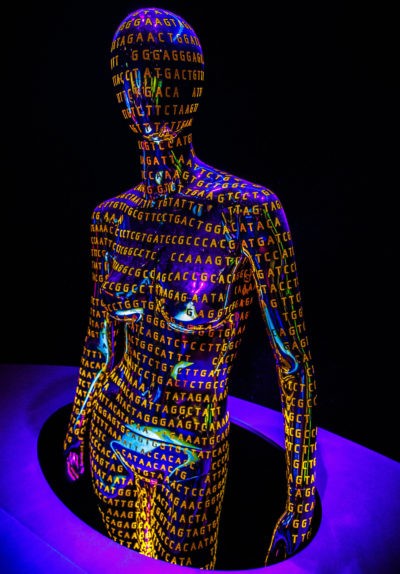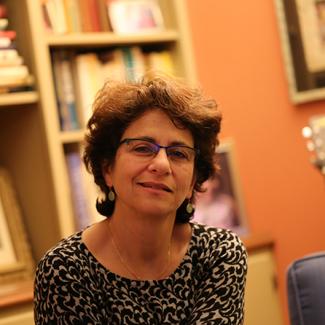
We live in an age where we have become accustomed to the constant onslaught of technological interventions in our lives. Some of it is positive, enriching, and conducive to our flourishing; much of it is frightening. In the arena of medicine, we fear the possible consequences of these interventions—consequences to our physical bodies, but also consequences to our identities. Our identities as persons cannot be separated from our bodies; nor can we imagine that they are formed in isolation from other persons. Yet, with knowledge of genetics we confront the reality that much of “who” we are is shaped by the matter that makes up our physicality. For that reason, interventions directed at our genes elicit great alarm, especially when those interventions tamper with germline cells ensuring that the effects will be passed on to future generations.
Genetic interventions are not new. Since at least the 1980s, we have been able to manipulate genes directly and indirectly. This manipulation is mostly driven by medical science with its goal of treating diseases and reducing human suffering. Yet lurking in the shadows is the worry that this goal could easily be put to nefarious uses. The most recent development in this arena is what is referred to as CRISPR-Cas9 (clustered regularly interspaced short palindromic repeats), a technique of genome editing[1] that provides an easily accessible way to directly change the makeup of individual genes. CRISPR has been described by many as a radical development in genetic engineering, mainly because unlike earlier interventions it allows us to modify individual genes in a highly targeted and cost-effective manner. As with all earlier advances in genetic technologies, the hype distorts the reality. For example, an online news account describing how CRISPR works has the following subheading: “Everything you need to know about the genome editing breakthrough that one day could cure disease, eradicate species and build designer babies.” One can see in such a quote the way that important distinctions, such as between treatment and enhancement, are elided.
In this brief comment, I will bracket the possibility of nefarious uses of this technology and ask instead how even positive uses of this type of intervention (to cure disease, for example) might affect human identity. My question will be framed by Roman Catholic conceptions of identity and personhood. Insight into the Catholic view is especially important in light of the perception that the Catholic church rejects bio-technological interventions. Understanding how this particular faith community navigates a path between fear of technological overreach and the pursuit of medical advances allows us to see the complexity of the relationship between human identity and genetic intervention. There are three features of identity central to the Catholic view that can also illuminate public discussions about the future of genomic editing and its impact on human identity. These are: humans exist in a tension between dependence and responsibility, humans are relational, and humans are embodied. As I shall argue, properly understood, all three of these features can serve as the scaffolding for a society that values justice.
Human identity in the Catholic context is derived from the understanding that humans are created in the image of God, meaning that humans possess rationality and the capacity to know and pursue the good. Humans exist in a tension between being creatures of God and “free” agents who are responsible for their actions. Hence, they are both dependent and free. This status grants humans the ability to pursue their moral good while also leaving them the possibility to turn away from it. Human identity and personhood are thus premised on this capacity. The choice to modify individual genes is a consequence of that fundamental freedom, but it also challenges the relationship of human dependence on God. Critics of genetic interventions often invoke the metaphor of “playing God” as a way to signal human overreaching, arrogance, and pride. This tension between dependence and freedom/responsibility ought to function as a sort of horizon against which to understand moral choices, both individually and communally. As individuals, our actions are constrained by this tension; yet when expanded to society, the tension forces us to reflect more deeply on what it means to be responsible to our fellow humans. Applied to genomic editing, this suggests a prudent course which expands the range of consequences of our actions that count as relevant. Thus, for example, responsibility to persons on the margins of society, who are least likely to benefit from these interventions, must be a driving force in our moral reflections on this issue.

Also fundamental to Catholic conceptions of personhood is the connected idea that the person is relational and communal. The moral injunctions to love one’s neighbor and to do justice presume that human identity is shaped by and for interactions with and responsibility to others. For Catholics, there is a theological backdrop to this notion of relationality—one grounded in the idea of God as three persons in the trinity, suggesting that God, in his very essence, is relational. Yet, even without the theological backdrop relationality implies human caring. It connects caring for the other with the inclination of all humans to self-preservation. Our bonds with other humans drive us to pursue medical technologies. One common concern about recent developments in genomic editing is that they threaten to undermine our bonds to future generations by altering future genomic maps. This concern extends the idea of relationality to a different temporal horizon.
In some sense the most fundamental Catholic belief about the nature of human identity is the emphasis on the embodied nature of human existence. Beyond a mere statement of fact, this claim is normative insofar as morality is experienced in and through the body. Yet, making the body central is not to suggest that the human is merely a whole made up of its component material parts. The body is endowed with meaning and it also creates meaning. While the Catholic tradition’s relationship to natural law is complicated, there is strong agreement that the body can provide information, and perhaps even guidance, for determining morally appropriate actions. Exactly how this happens is complicated by the fact that bodies are mediated culturally and the meanings we derive from them are shaped by broader webs of meaning. It is possible to see this third feature as existing in tension with the other two.
All three of these features of human identity support the centrality of respect for human dignity to Catholic ethics. Genome editing’s ability to manipulate an individual’s genetic identity can easily be seen as an assault on human dignity, especially if dignity is conceptualized as material integrity or wholeness. Yet, a different picture emerges when one expands integrity to mean well-being and human flourishing in a community governed by the norms of justice. Put differently, we must be vigilant to maintain the first two features of human identity alongside the third one.
These accounts of human identity and dignity to tell us that tampering with the physical building blocks of the human person has far-reaching consequences that threaten to disrupt the essence of the person. Yet, do they provide us with sufficient evidence to support the view that genome editing ought to be morally prohibited? Earlier debates about the ethics of genetic technology focused on drawing lines between germ cells and somatic cells, and between therapy vs. enhancement.[2] Those lines were intended to protect any perceived threats to human identity—threats that might embolden humans, leading them to forget the tension in their relationship to God, or to lose sight of their fundamental relationality, or to mistake their embodiedness as a purely material construct. The news in late 2018, that scientists had succeeded in editing the embryonic genes of twins born in China suggests that this technology will not disappear. The question for moralists is whether or not the moral arguments deployed in earlier conversations about genetic technology will prove sufficient to the task of addressing this latest twist. My view is that drawing this line between shorter-term somatic cell interventions and irreversible germ cell interventions is still a prudent course of action as well as a morally sound one. The three features of Catholic thinking about human identity can function as groundwork for the line-drawing task by reminding us of human limits, communal commitments (to the present as well as future communities), and the meaning of embodiment. While the ease and availability of CRISPR technology makes the line both harder to draw and to hold, it is important that we not lose sight of these fundamental views about identity.
[1] It is referred to as editing since it enables the scientist to target specific parts of the DNA sequence that have been identified using letters of the alphabet. The question of the implications of the editing metaphor is important to consider. The Nuffield Council report issued in 2015 addresses this important point and draws attention to the reductionism as well as the “overstretching” that can result from relying too heavily on a metaphor. Nuffield Council on Bioethics, “Genetic Editing: An Ethical Review,” (London: Nuffield Council on Bioethics, 2016).
[2] Kelly E. Ormond et al., “Human Germline Genome Editing,” American Journal of Human Genetics 101, no. 2 (August 3, 2017): 167–76, https://doi.org/10.1016/j.ajhg.2017.06.012.

